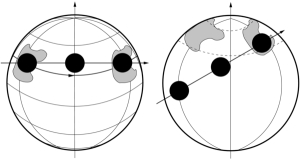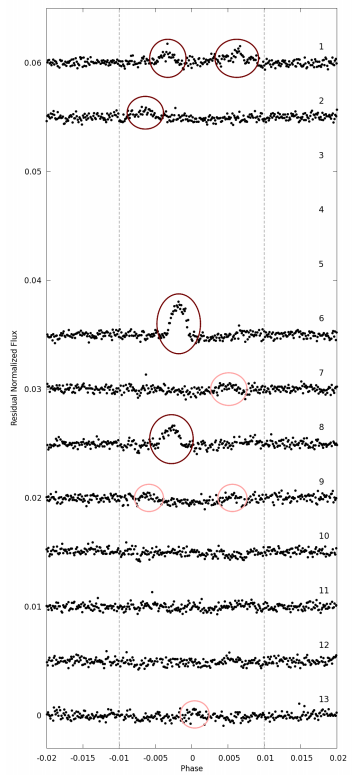Here’s a topic we’ll be hearing much more about: how the observed spectrum of a transiting exoplanet is affected by transiting across star-spots. In “transmission spectroscopy” the starlight shines through the planet’s atmosphere during transit, and the easiest thing to do is assume that the star itself is a uniform light source.
But as discussed by papers led by Ben Rackham, if the planet passes over a dark region (star spot) or bright region (faculae), this would change the observed spectrum.

A new paper led by Alex Bixel about WASP-4b is the first to attempt to correct for this effect. The authors’ transit observations show a clear crossing of a starspot (the feature is shown in blue, the spot shows as a upward bump since the planet is then removing less light):

And here is the difference it makes. The blue curve is the observed spectrum, presumed to be of the planet’s atmosphere. The orange curve is then the spectrum corrected for the presence of the star spot.

The details of how to do this are complex, and are discussed at length in the above papers. The central message is that “active FGK host stars can produce such features and care is warranted in interpreting transmission spectra from these systems”.
However, there is good news in that: “stellar contamination in transmission spectra of FGK-hosted exoplanets is generally less problematic than for exoplanets orbiting M dwarfs”, and that such signals “are generally minor at wavelengths of planetary atomic and molecular features”. Overall the authors say that their study “bodes well for high-precision observations of these targets”.









